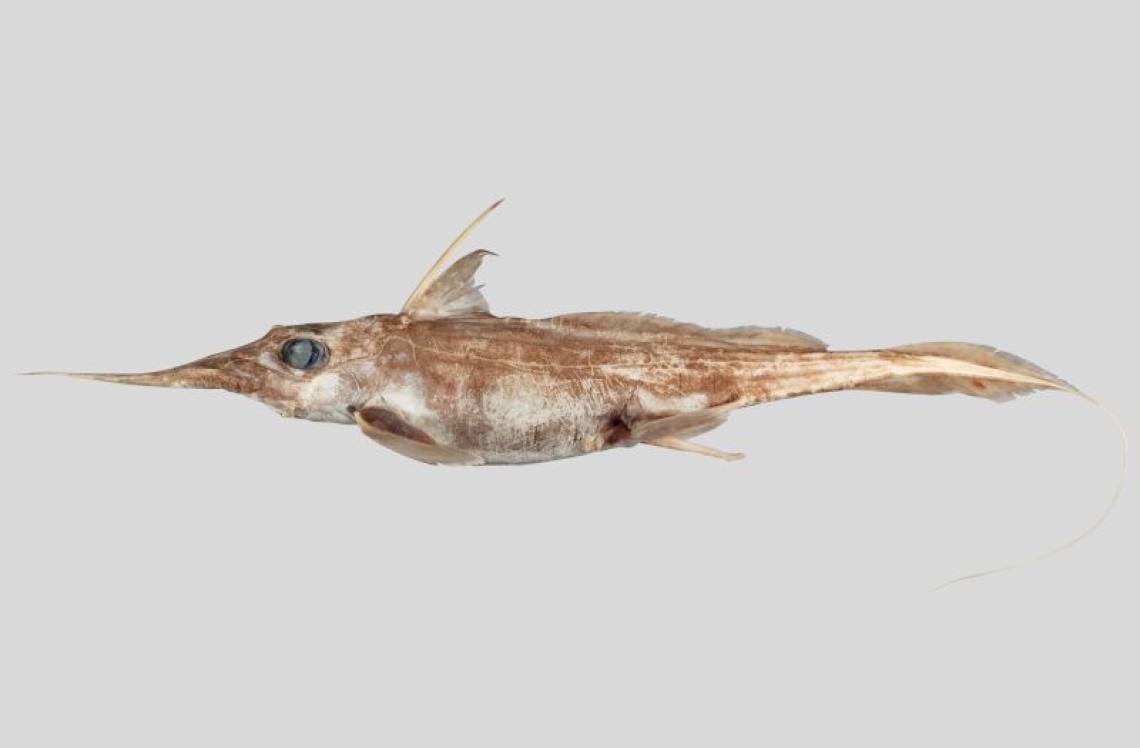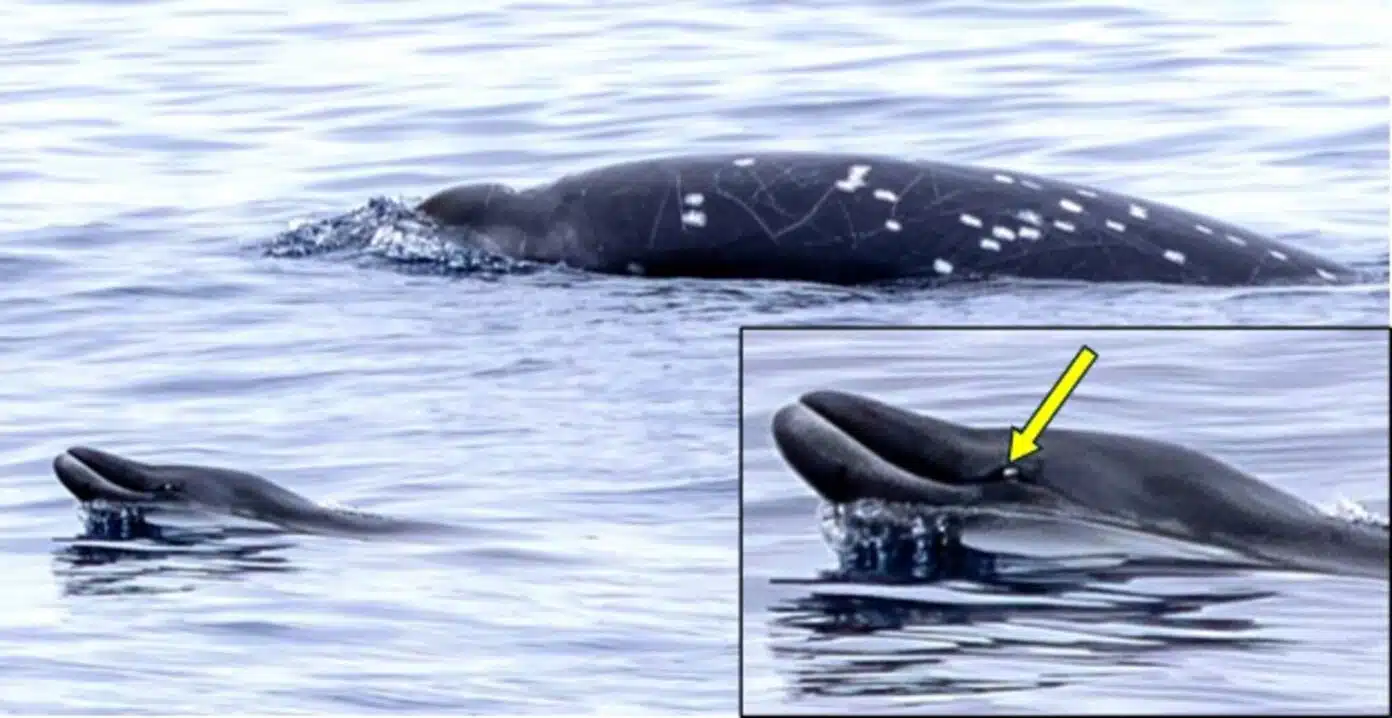Around the World in 80 Casts: Global Aquatic Wildlife Discoveries
By Manus AI | November 25, 2025
Introduction
Welcome, fellow adventurers, to another installment of "Around the World in 80 Casts"! This week, we embark on a journey into the mysterious depths of our planet's oceans, lakes, and rivers to uncover the most bizarre, rare, and fascinating aquatic creatures that have recently come to light. From the abyssal plains to the icy waters of the north, the past seven days have been teeming with incredible discoveries that remind us just how much of our aquatic world remains unexplored. So, grab your gear and prepare to be amazed as we dive into the latest findings from the world of marine biology.

The Ghostly Grandma of the Deep: A New Species of Ghost Shark
Our first stop takes us to the deep, dark waters off the coasts of Australia and New Zealand, where scientists have unveiled a new species of ghost shark, the Australasian Narrow-nosed Spookfish, scientifically known as *Harriotta avia*. This remarkable discovery, led by NIWA Fisheries Scientist Dr. Brit Finucci, has shed new light on the enigmatic world of chimaeras, the ancient relatives of sharks and rays. Previously mistaken for a globally distributed species, genetic and morphological analysis revealed that *Harriotta avia* is a distinct species, a true local of the Australasian deep.
What makes this ghost shark particularly special is its name. Dr. Finucci named the species in memory of her grandmother, with "Avia" meaning grandmother in Latin. It's a fitting tribute, as chimaeras are considered the "grandmas and grandpas" of the fish world, with a lineage stretching back millions of years. These cartilaginous fish are characterized by their smooth, scaleless skin and beak-like teeth, which they use to feast on crustaceans and mollusks in the crushing pressures of the deep sea. *Harriotta avia* is distinguished by its elongated, narrow snout, large eyes adapted for the perpetual darkness, and long, broad pectoral fins that give it a ghostly, gliding appearance. Its chocolate-brown coloration provides perfect camouflage in the dimly lit environment it calls home, at depths of up to 2,600 meters. The discovery of this new species on the Chatham Rise highlights the vast, unexplored biodiversity of our oceans and the secrets that still lie hidden in the abyss.

A Living Legend: First-Ever Live Sighting of the Ginkgo-Toothed Beaked Whale
For our next discovery, we travel to the Pacific waters off Baja California, Mexico, where a team of researchers experienced a once-in-a-lifetime encounter. In June 2024, they documented the first-ever live sighting of a ginkgo-toothed beaked whale, a species previously known only from stranded carcasses. This groundbreaking achievement, published in the journal *Marine Mammal Science*, was the culmination of a five-year search for a mysterious underwater sound, codenamed BW43. The team, led by Elizabeth Henderson of the US Navy's Naval Information Warfare Center, initially believed the sound belonged to another elusive species, Perrin's beaked whale. However, a tiny skin sample, no larger than a pencil eraser and collected with a modified crossbow, revealed the true identity of the vocalizer.
The sighting was not without its drama. The precious skin sample was nearly lost to a curious albatross, but quick thinking and a few pieces of bread saved the day. The discovery is significant not only because it provides the first glimpse of a living ginkgo-toothed beaked whale, but also because it rewrites our understanding of the species' range. Previously thought to be confined to the waters around Japan, the new evidence, including acoustic data, confirms that these whales are year-round residents of the waters off California and Baja. Beaked whales are notoriously difficult to study, as they are deep divers that surface for only brief moments and tend to avoid boats. This incredible sighting is a testament to the patience, perseverance, and innovative techniques of the research team, and it opens a new chapter in the study of these enigmatic marine mammals.

The Glowing Hunter of the Abyss: The West Australian Lanternshark
Our journey now takes us to the Gascoyne Marine Park off the coast of Western Australia, where a 2022 expedition has yielded yet another new species: the West Australian Lanternshark, *Etmopterus westraliensis*. This small, deep-sea shark is a true creature of the night, equipped with the remarkable ability to produce its own light. This bioluminescence, produced by photophores on its belly and flanks, is what gives the lanternshark its name. The largest specimen found measured only 407 millimeters, but what it lacks in size, it makes up for in its captivating glow.
The discovery, described by Dr. Will White of the CSIRO Australian National Fish Collection, is part of a treasure trove of new species found during the same expedition, which has already given us the Painted Hornshark and the Ridged-egg Catshark. The West Australian Lanternshark is perfectly adapted to its deep-sea environment, with large eyes to capture any glimmer of light and a slim, agile body. It navigates the darkness at depths of up to 610 meters, a silent, glowing hunter in the abyss. The discovery of this new lanternshark, along with the estimated 600 other new species from the same voyage, underscores the immense biodiversity of Australia's deep-sea ecosystems and the importance of continued exploration.

A Fiery Jewel of the North: The Rare Orange Arctic Char
For our final discovery, we head to the icy waters of Alaska, where fisherman Gunner Lewis reeled in a truly spectacular catch: a fiery orange Arctic char. This fish, described as looking like a "mythical Pokémon," is a stunning example of the vibrant colors that can be found in the animal kingdom. The brilliant orange hue is a result of the char's diet, which is rich in astaxanthin, a pigment found in the crustaceans and other prey it consumes. While Arctic char are known for their beautiful markings, this particular specimen's intense coloration is exceptionally rare.
Arctic char are the northernmost freshwater fish in the world, and their ability to thrive in frigid environments is a testament to their resilience. They are found in the Arctic and subarctic waters of North America, Europe, and Asia, and are a prized catch for anglers. Gunner Lewis, who specializes in catching Arctic char, has a knack for finding these unusually colored individuals, and his videos have captivated audiences worldwide. The sight of this fiery orange fish against the stark, white backdrop of the Alaskan ice is a breathtaking reminder of the beauty and diversity of life in even the most extreme environments. And, in a wonderful act of conservation, Lewis released this magnificent creature back into the water, ensuring that it can continue to grace the icy depths with its vibrant presence.
Conclusion
From the ghostly depths of the Pacific to the frozen lakes of the north, this week's discoveries have once again revealed the incredible diversity and wonder of our planet's aquatic ecosystems. Each new species, each rare sighting, and each unusual behavior adds another piece to the puzzle of life on Earth. As we continue to explore the uncharted territories of our oceans, we are constantly reminded of the importance of conservation and the need to protect these fragile environments. We hope you've enjoyed this journey "Around the World in 80 Casts," and we invite you to join us again next week as we cast our lines into the vast and mysterious world of aquatic wildlife.
